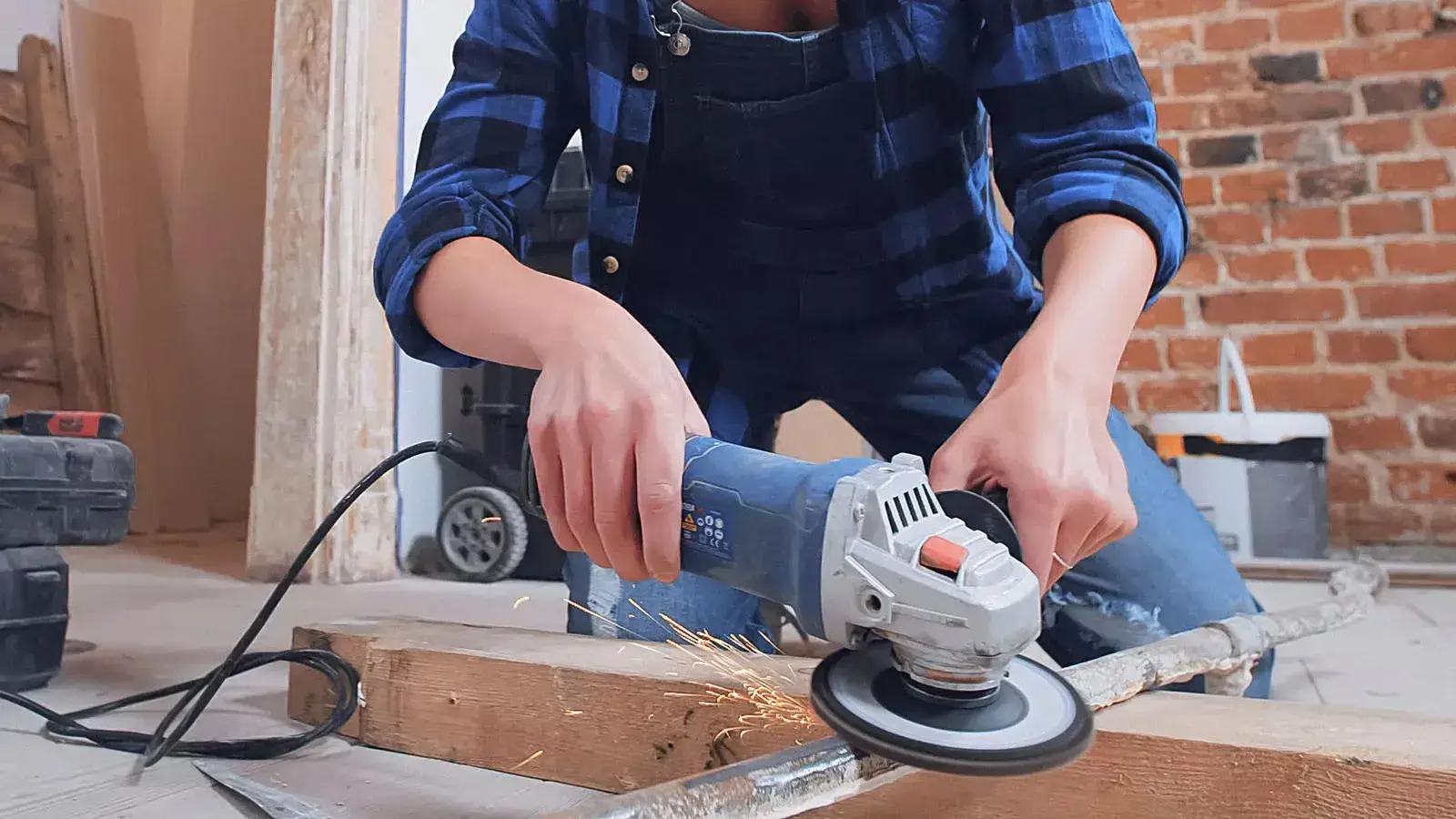An angle grinder is a versatile power tool that can be used for a variety of tasks, such as cutting metal, concrete, tile, brick, and wood. However, not all materials are suitable for cutting with an angle grinder. Some materials can pose serious risks to your safety and damage your tool if you attempt to cut them with an angle grinder. In this article, we will discuss what you should not cut with an angle grinder and why.
The Dangers of Cutting Certain Materials With an Angle Grinder
You should not cut any material that is flammable, explosive, or toxic with an angle grinder. These materials include gas cylinders, aerosol cans, batteries, asbestos, and magnesium. Cutting these materials with an angle grinder can cause sparks, flames, explosions, or harmful fumes that can injure you or start a fire. You should also avoid cutting any material that is too hard, brittle, or thin for your angle grinder blade. These materials include hardened steel, ceramic, glass, and sheet metal. Cutting these materials with an angle grinder can cause the blade to shatter, crack, or wear out quickly, which can result in flying debris, kickback, or loss of control.
How to Cut Safely and Effectively With an Angle Grinder
To cut safely and effectively with an angle grinder, you need to follow some basic precautions and tips. Here are some of them:
Choose the right blade for the material and the task. There are different types of angle grinder blades, such as abrasive discs, diamond blades, and metal cut-off wheels. Each blade has its own advantages and limitations, so you need to select the one that is suitable for the material and the task you are performing. For example, abrasive discs are good for cutting metal, but not for cutting concrete or tile. Diamond blades are good for cutting concrete or tile, but not for cutting metal. Metal cut-off wheels are good for cutting thin metal, but not for cutting thick metal or wood.
Wear the appropriate personal protective equipment (PPE). Cutting with an angle grinder can produce sparks, dust, noise, and flying debris, which can harm your eyes, ears, skin, and lungs. Therefore, you need to wear the appropriate PPE, such as safety glasses, gloves, ear plugs, dust mask, and long sleeves. You should also wear sturdy shoes and avoid loose clothing, jewelry, or hair that can get caught in the tool.
Secure the material and the tool. Before cutting, you need to secure the material and the tool to prevent them from moving or slipping. You can use clamps, vices, or supports to hold the material firmly in place. You can also use a guide or a fence to guide the tool along the cut line. You should also check the blade for any cracks, chips, or damage, and replace it if necessary. You should also make sure the blade is properly attached and tightened to the tool.
Cut slowly and steadily. When cutting, you need to cut slowly and steadily, without applying too much pressure or force. You should let the blade do the work and not push or twist the tool. You should also avoid cutting too deep or too fast, as this can cause the blade to overheat, bind, or jam. You should also avoid cutting at an angle or a curve, as this can cause the blade to flex or break. You should also stop the tool periodically and let it cool down, especially if you are cutting for a long time or a thick material.
Keep a safe distance and a firm grip. When cutting, you need to keep a safe distance and a firm grip on the tool. You should hold the tool with both hands and keep your body away from the blade. You should also keep the cord and the extension cord away from the blade and the cut area. You should also be aware of your surroundings and avoid any obstacles or distractions that can interfere with your cutting. You should also be prepared for any kickback or recoil that can occur if the blade binds or jams.
Conclusion
An angle grinder is a useful tool that can cut a variety of materials, but not all materials are suitable for cutting with an angle grinder. You should not cut any material that is flammable, explosive, or toxic with an angle grinder, as this can cause serious hazards to your safety and your tool. You should also avoid cutting any material that is too hard, brittle, or thin for your angle grinder blade, as this can cause the blade to fail or damage. To cut safely and effectively with an angle grinder, you need to follow some basic precautions and tips, such as choosing the right blade, wearing the appropriate PPE, securing the material and the tool, cutting slowly and steadily, and keeping a safe distance and a firm grip. By following these guidelines, you can make the most of your angle grinder and cut with confidence.

